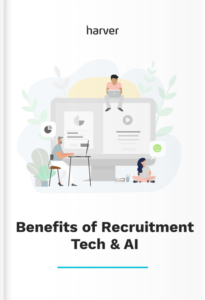A decent applicant tracking system is the backbone of your recruitment tech stack.
As a large enterprise, you’re likely hiring for many roles at a time, and you’re receiving thousands of applications from job seekers. To make sure you’re selecting the best candidates, and you have a streamlined hiring process, you need a robust enterprise ATS that can handle a large number of applications.
According to HR Technologist, Fortune 500 companies are now choosing between more than 20 enterprise ATS solutions. These numbers tell us that not only are there various options available in the enterprise ATS market, but companies are choosing solutions that fit their specific needs—not just the most popular one.
So what exactly should you be looking for when choosing your enterprise ATS? In this article, we’re going to look at the nine aspects any enterprise ATS should have before you consider investing in it.
What’s in?
- Specific functionality
- Levels of access
- Integrations
- Customization options
- Candidate and user experience
- Workflow management
- Dashboards
- Pricing model
- Support
Like what you see?
Don’t miss out. Subscribe to our quarterly digest to get the latest TA and TM resources delivered right to your inbox.
1. Specific functionality
Any decent enterprise ATS will have a set of specific functions to make recruiting the right talent easier.
Search and sorting features like advanced search, social recruiting capabilities, and talent pooling enable recruiters to manage large amounts of candidates applying for multiple roles at the same time. For example, if an ATS has a sorting function, you can filter candidates using keywords, job descriptions, skillset or experience.
Additionally, specific functionalities allow your company to:
- Use social collaboration tools that enable candidates to connect with your company and share jobs with their network
- Conduct automatic reference checks on applicants
- Set up video interviews and send questionnaires for candidates to answer
- Send emails to candidates about their application status
Above all, the right enterprise ATS platform for your company will have one result—centralizing your recruitment efforts into a single platform.
Determining which functionalities are must-have and which are nice to have will help you narrow down the options.
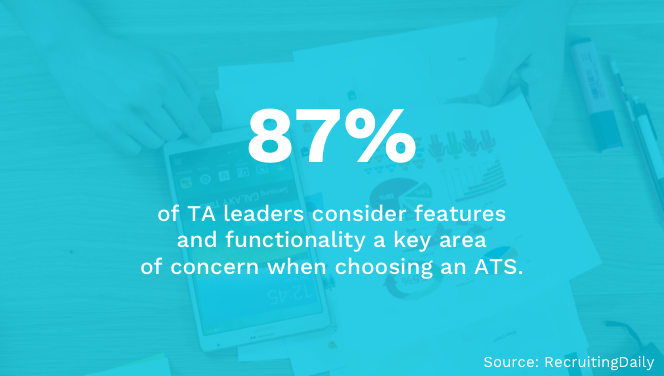
This is followed by tech integrations (85%) and price/contract value (72%).
2. Levels of access
When you’re hiring for a position, different parts of the recruitment process need to be tended to by different employees at your company.
It’s crucial your enterprise ATS reflects this and offers user levels with varying permissions for each person involved in the hiring process. Your software should be customizable, so you can provide different levels of access to your administration staff, recruitment managers, team leaders, and of course, the applicants themselves.
For example, Greenhouse has six default levels of access:
- Basic
- Interviewer
- Job Admin: Standard
- Job Admin: Private
- Job Admin: Custom
- Site admin
Their user permissions can be further customized based on team needs.
Don’t forget that if your company uses external recruitment agencies, your enterprise ATS should allow user roles for outside access.
3. Integrations
Checking an enterprise ATS works with your HR and ERP systems, as well as pre-employment assessment solutions, is essential to it complementing your existing tech stack.
Integrations allow your recruitment process to flow smoothly by keeping both systems updated in real-time with automated triggers and actions. For example, with a well-integrated ATS, you can post, update and delete jobs across several job sites directly from your platform. If your ATS has integrations with job boards like Indeed, CareerBuilder, Monster, LinkedIn, and Glassdoor, any updates you make to a job will be automatically updated across all sites instantly.
The main job of integration is to cut down on your data entry and save time. The more platforms your ATS integrates with, the less time you’ll have to spend updating each platform with the same information.

Harver makes evaluating pre-employment assessments a breeze as it integrates with major ATSs for seamless workflow across systems. For example, Harver’s integration with Oracle Taleo Cloud means recruiters can see the assessment data instantly on their Taleo screen when a candidate finishes their assessment.
4. Customization options
Every company’s hiring process is unique, so it’s essential your ATS can be customized to your environment. Enterprise companies have more complex hiring pipelines than a small business. Therefore, customizable ATS allows companies to improve their candidate’s experience and hiring workflows.
For example, ATS vendor Jobvite allows companies to create a customized portal for recruiting new hires. Companies can build job pages that include brand images, videos, and feed candidate data back into their ATS. This streamlines their hiring workflows so new candidates are automatically added into their database.
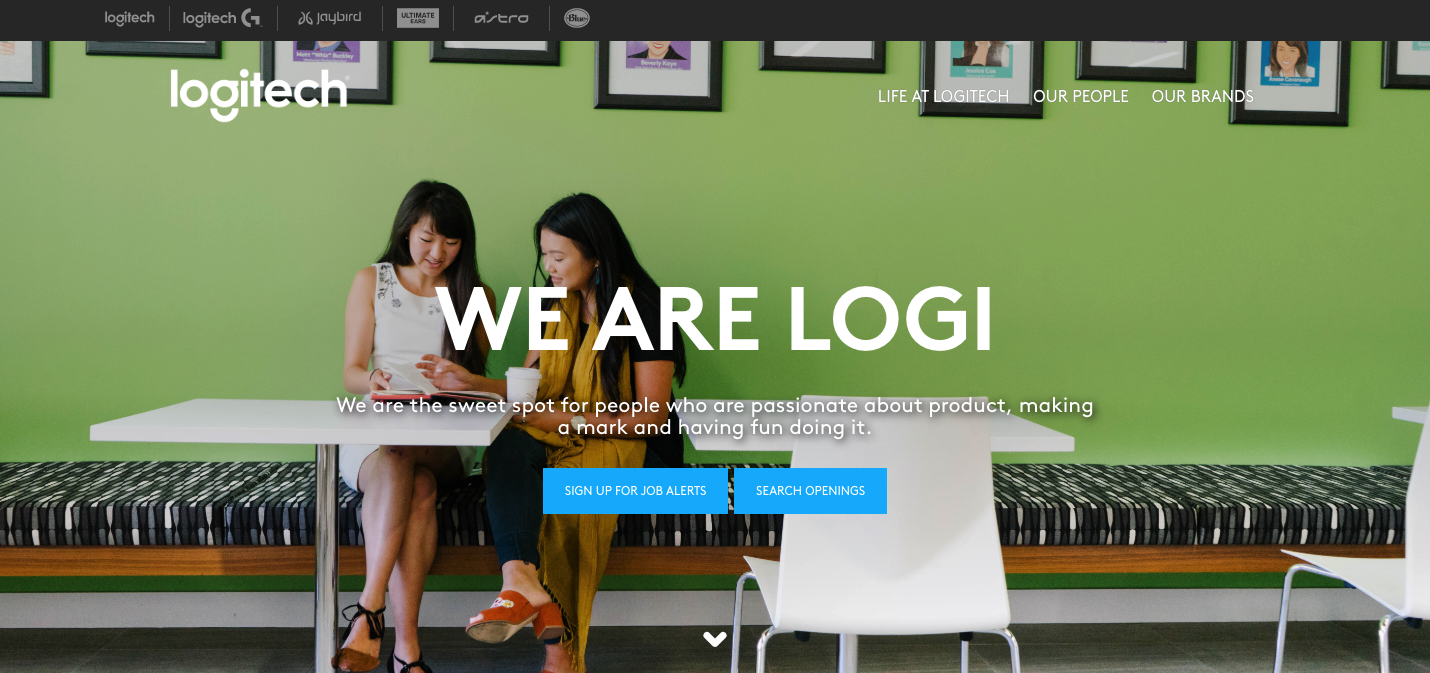
The career page of Logitech is an example of a branded job portal created using Jobvite.
A customizable ATS also allows companies to build hiring processes that match their actual workflow. It’s crucial the software you invest in can change to move candidates through the application and interview phases in a way that compliments your existing processes.
How AI & recruitment technology is changing recruiting experience
Find out how tech has helped other companies grow by enhancing both the recruiters’ and candidates’ experience!
5. Candidate and user experience
When your company is hiring, remember—the candidates are interviewing you too. Look at how candidates could interact with your ATS and what experience they, along with your recruiters and hiring managers, will have.
For candidates, their experience on your career site linked to your ATS will have a big impact on their overall impression of your company. It’s important that whenever a candidate touches your brand, you convey your value proposition and welcome candidates through a virtual door.
The first step to providing your candidates with a good experience is making it easy for them to apply for an open role. An ATS can help by streamlining the process from their application, to booking an interview and keeping them up to date with their application.
An ideal ATS will be:
- Responsive: Whether they’re applying from a desktop or their mobile phone, a candidate must have a good experience no matter what device they’re using
- Easy: By integrating with other job sites and tools like Google Docs for easy CV uploads. For example, some ATS integrate with LinkedIn’s “Easy Apply” feature so candidates can quickly apply for positions:
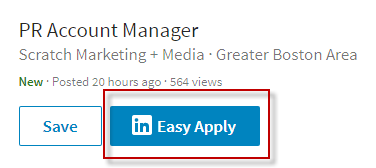
- Visual: Many ATS tools can feature video presentations of job descriptions and current employees to paint what day-to-day life looks at inside the company
- User-friendly: Making it simple for candidates to complete surveys, questionnaires, assessments, and use whatever screening tools you require
6. Workflow management
Like customization, workflow management is an important feature to consider when investing in an enterprise ATS.
The enterprise recruitment process is similar for a lot of large companies; pre-employment testing, assignment, interviews, reference checks, and a job offer. The right ATS should automate and streamline as much of that workflow as possible, such as saving job searches and automating communications like interview scheduling with candidates. It’s also essential that the software allows you to configure application forms and hiring prerequisites to match your requirements.
For example, the approval process, data feeds, and internal talent pipelines in the ATS should all be adaptable to fit with your hiring needs. If your hiring process and workflow changes, your ATS needs to be able to change with it. If your processes need to adapt to your ATS, it can restrict the way you hire and ultimately impact a candidate’s experience with your company.
7. Dashboards
One of the main visual features of an ATS is its dashboards.
A dashboard can rank all your incoming candidates by their suitability or matching scores and save you time sifting through hundreds (or thousands) of applications. In turn, your recruiters can focus on the best candidates from the pre-assessment phase and narrow down who is the best fit for your vacant position.
It’s also crucial that the ATS’ dashboards track data and have reporting capabilities so you can understand how successful your recruitment efforts are. A dashboard can track data such as diversity compliance, cost to acquire candidates, time-to-hire, and the source of the application. Having this data at your fingertips allows you to see where your candidates are applying for positions, and if you’re hitting internal targets.
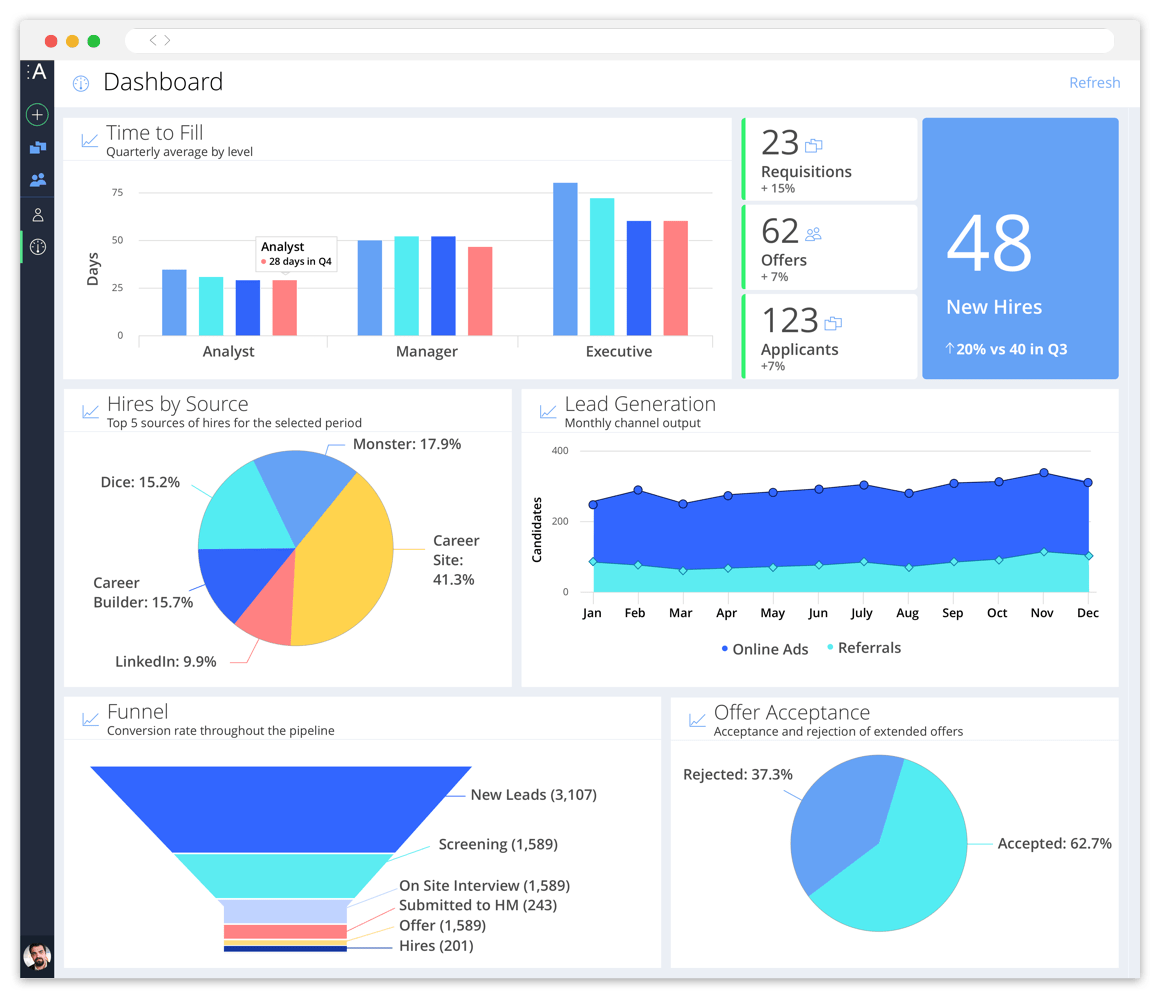
Avature ATS presents its users with a comprehensive data overview, which is helpful to get quick insights into your hiring efforts.
8. Pricing model
Like any company investment, you need to consider the pricing model of an ATS.
While some systems require you to pay per candidate, others will ask for an upfront annual fee, and may even impose restrictions on canceling your contract. It’s recommended you also look into features like reporting and workflow management to see if these are included in the price, or if you’ll have to pay extra. All of these variables will ultimately decide if the software is within your company’s budget.
Currently, the two common pricing models for enterprise ATS solutions are:
- Per user: You will be charged for the number of users you give access to the software. Each person you pay to have user access will be able to post jobs, view candidate applications, and look at data reports. This pricing model is mostly used by ATS vendors who offer quarterly/annual packages, with restricted numbers of users included in each pricing tier.
- Per position: You will be charged for the number of jobs you’re advertising. This pricing model usually accepts unlimited applications for each position and allows you to create as many internal user roles as you want. This pricing model is usually used by ATS vendors that are geared towards companies who post several jobs a month but are less interested in features like video interviewing.
9. Support
If you have a question about your ATS, how can you contact the support?
Hiring is a priority, and companies shouldn’t have to wait to get answers to their ATS-related questions. A lot of ATS vendors have a dedicated knowledge base to answer questions about account setup, and if you need it, a dedicated email to deal with support tickets.
You can use a product review site like G2 or Capterra to compare enterprise ATS tools to see which ones have a better rating for support among customers. For example, if you search iCIMS and Workday, the results for how responsive their support team is are similar, with iCIMS also being optimized for quick response:

An enterprise ATS can optimize the way your company hires candidates
As a large enterprise, you have specific needs when it comes to recruitment and talent acquisition. Therefore it’s essential for the ATS system you invest in to suit your requirements.
As enterprise requirements differ from those of small-to-medium-sized businesses, the only way you can be sure the tool will be a good fit is to get specific with the vendor. Don’t be afraid to ask ATS providers what their support system is like, the terms and conditions of their pricing contracts, and how customizable the platform is.
Like any investment for enterprise customers, ATS costs can be hefty. However, if the system is a good fit, your team will spend less time on data entry and paperwork—and more on hiring stellar candidates for your company.
How AI & recruitment technology is changing recruiting experience
Find out how tech has helped other companies grow by enhancing both the recruiters’ and candidates’ experience!

